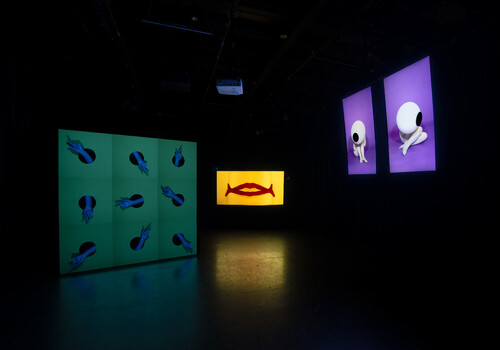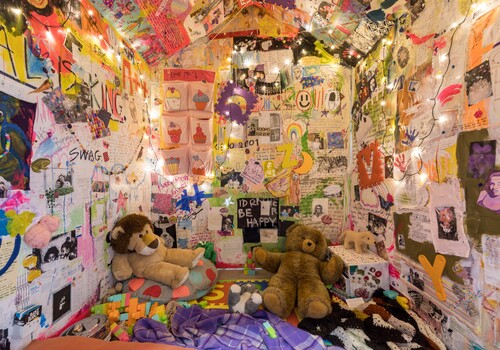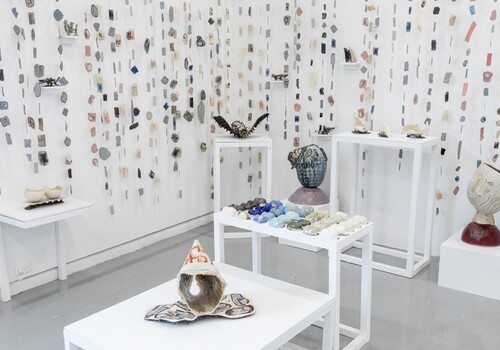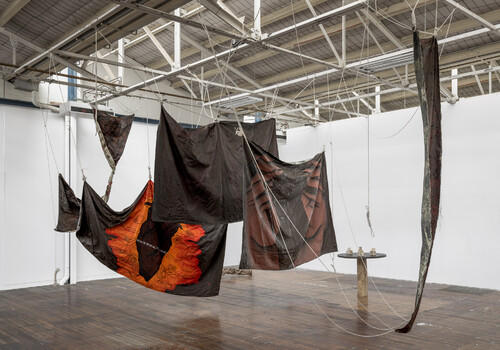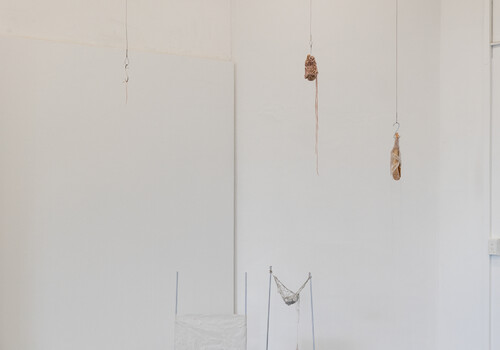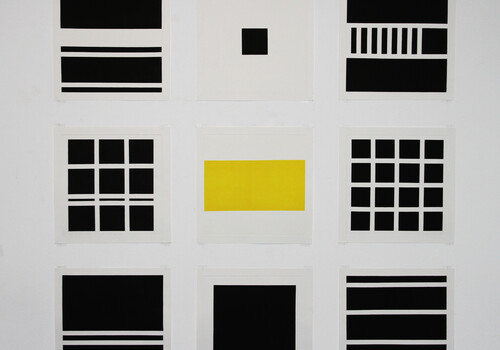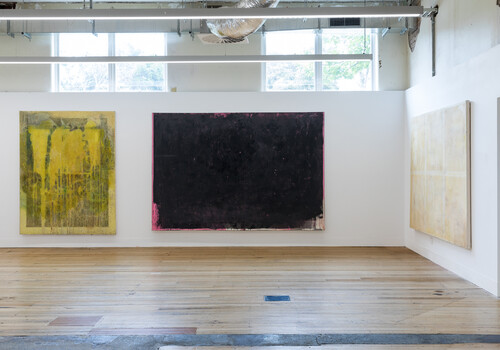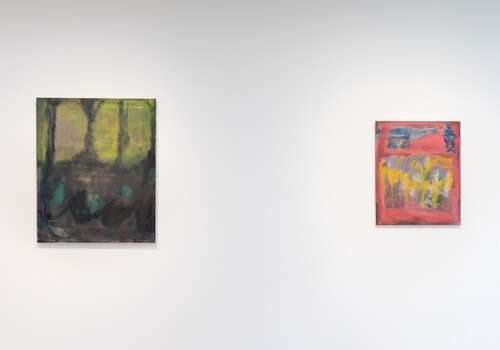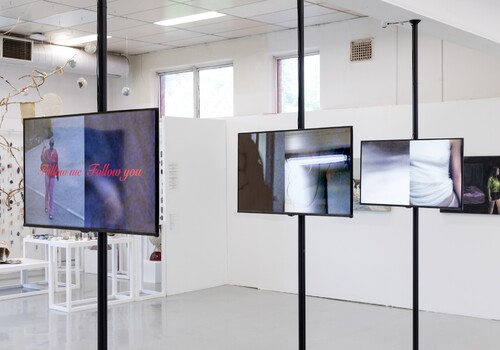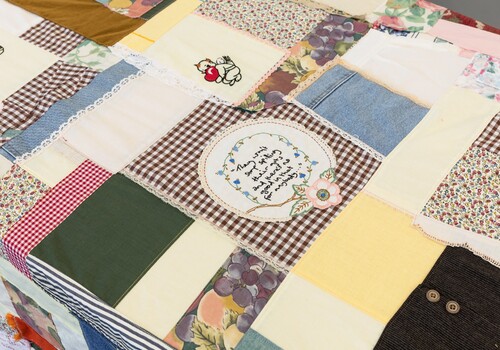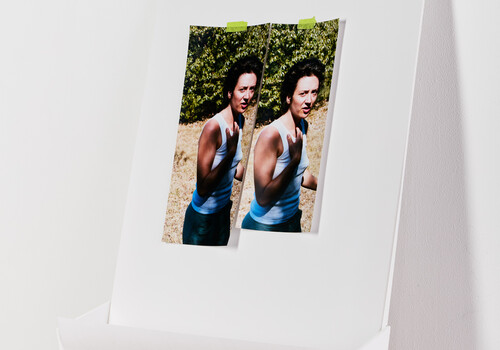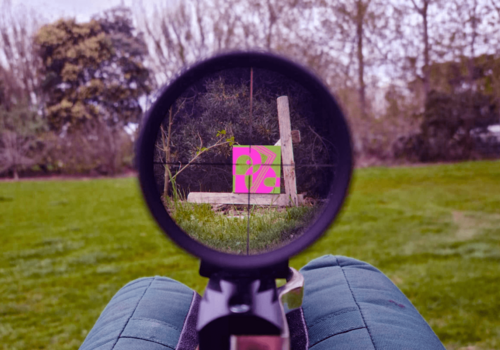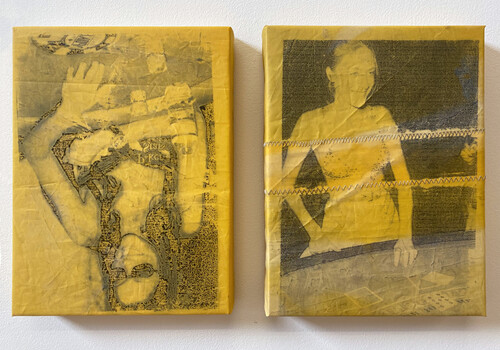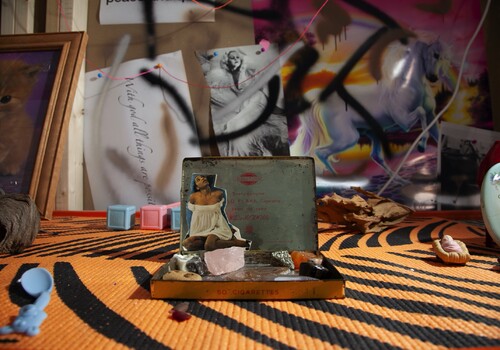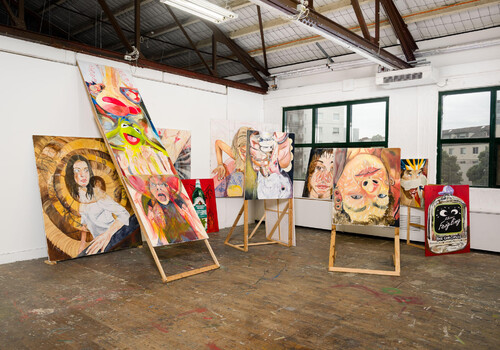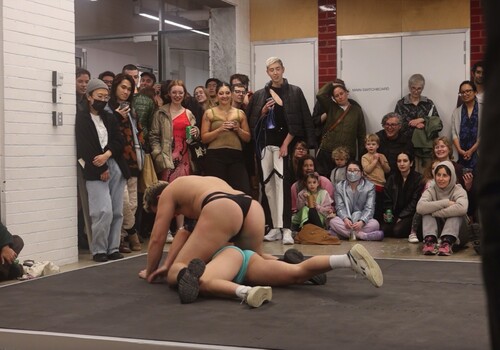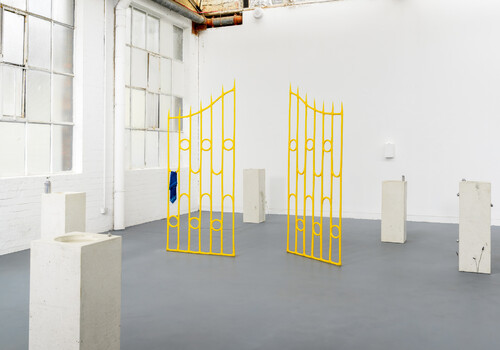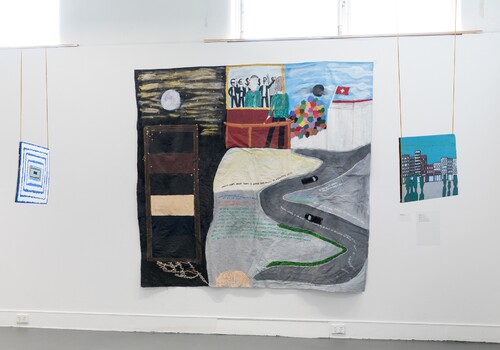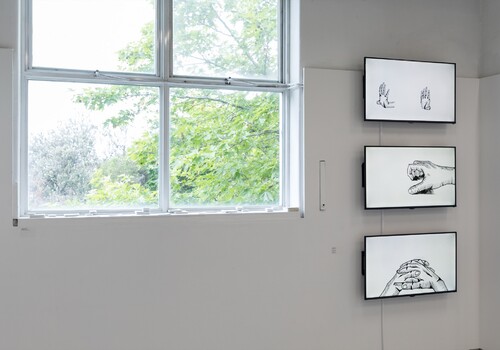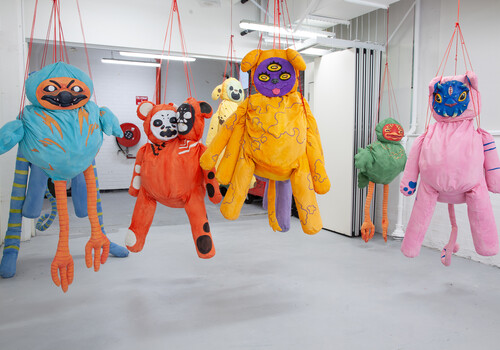Masters, Victorian College of the Arts
By Scott Mclatchie
In the aftermath of the opening of the VCA graduate exhibition, I found myself aware of my voyeuristic navigation of the galleries. This year’s exhibition sees works dealing with the rawness and heaviness of organic materials confined within the stark brightness and darkness of the school interiors. I was nervous around these monolithic spaces and objects that demand I pay attention to my own existence. But my heightened awareness was most clearly felt when looking at the Masters work—especially the installations by Katie Paine, Kia Zand and Jonathon Harris.
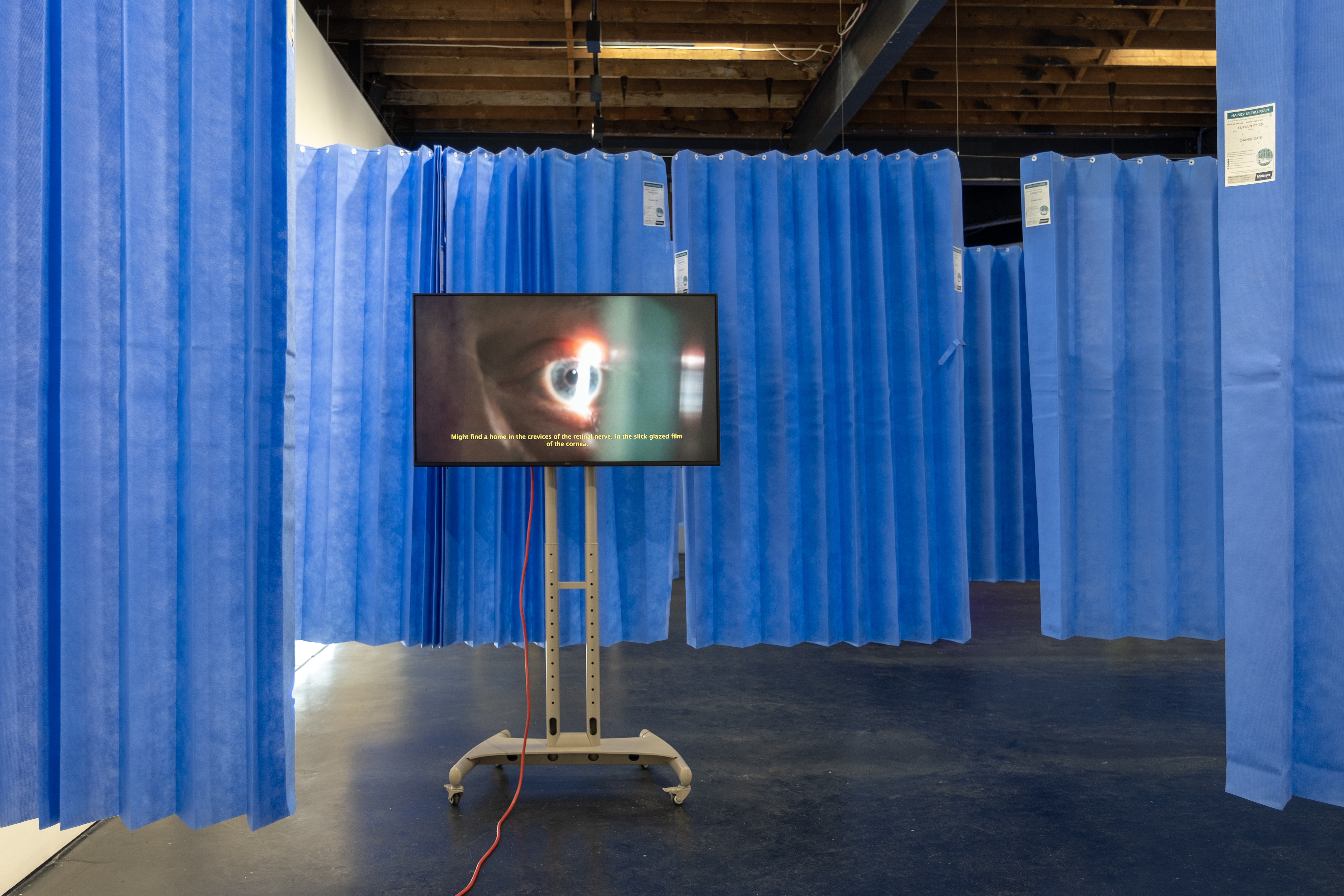
Paine’s work is pieced together from the research and practice of her Masters, a series of independent works “On the Myopic Gaze of a Surrogate Eye”, “Phantom Interlocutors”, “A Lonely Circumnavigation” and “For Mutable Configurations” situated inside the Fiona Sidney Myer gallery. The works embody this anxiety within the viewer. From the echoes of the audio of an almost methodical placement of television screens I overheard only one sentence as I twisted inside the labyrinth installation of hospital curtains and extension cords: “Hospitals are places that devour time”.
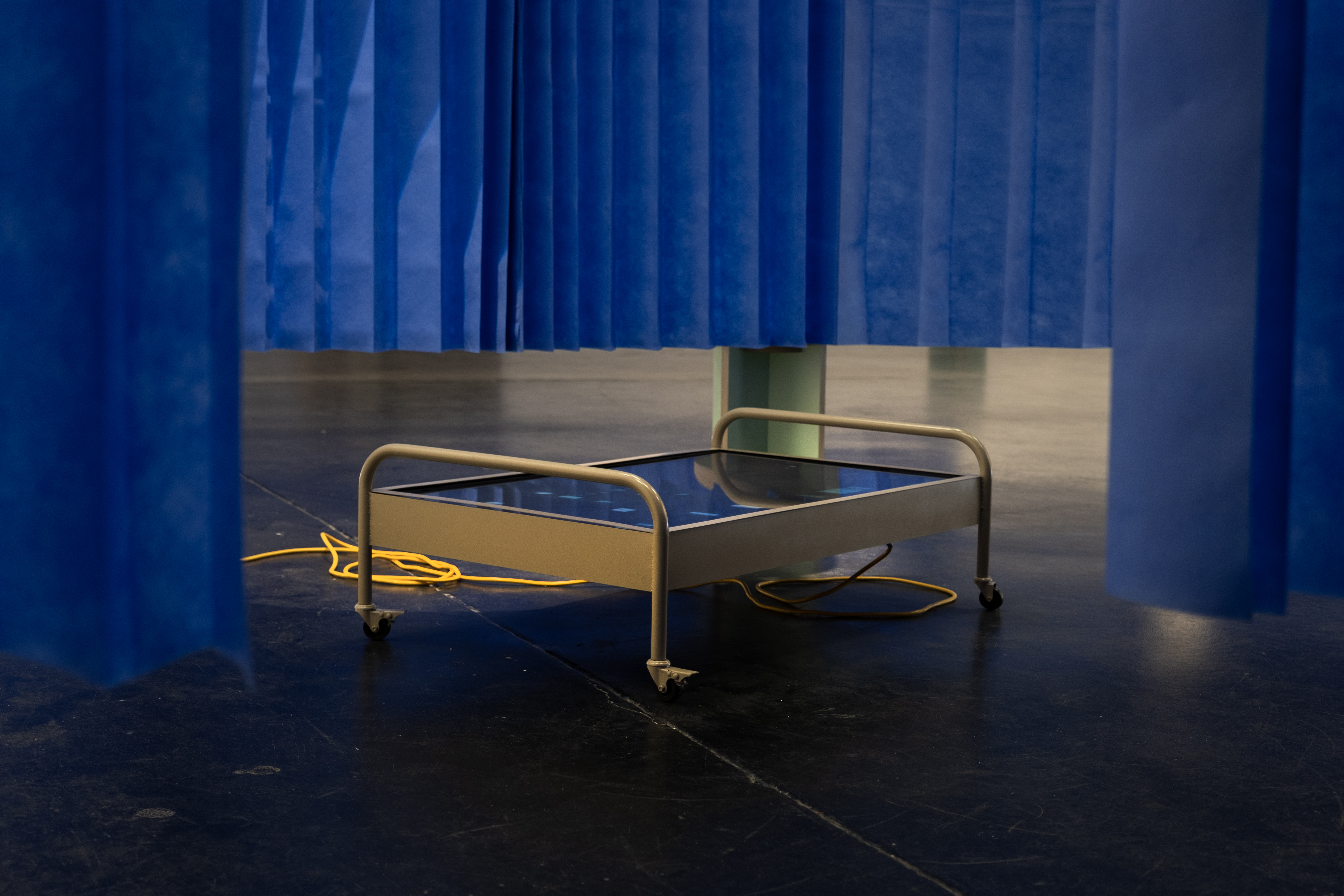
A sinister feeling comes with the work which feels like a heavy lament. Gaps and slits in the curtains become viewpoints for hiding but also to spy through, detecting the possibility of another person’s presence beyond the sacred spaces where a patient consults with a doctor. Much like the confines of the studio space, you can create a psychological barrier between yourself and others where none may enter. Katie’s work invites you into the space with materials that suggest a welcome space despite how cold and uneasy the room feels. An electronic chess board with a red flashing light suggests it is your turn, while the minimalist, contemporary wooden chair points you in the direction of a television screen where the anxiety of information and data is offset by a human voice that remains seemingly incoherent in the reverberations of the space.
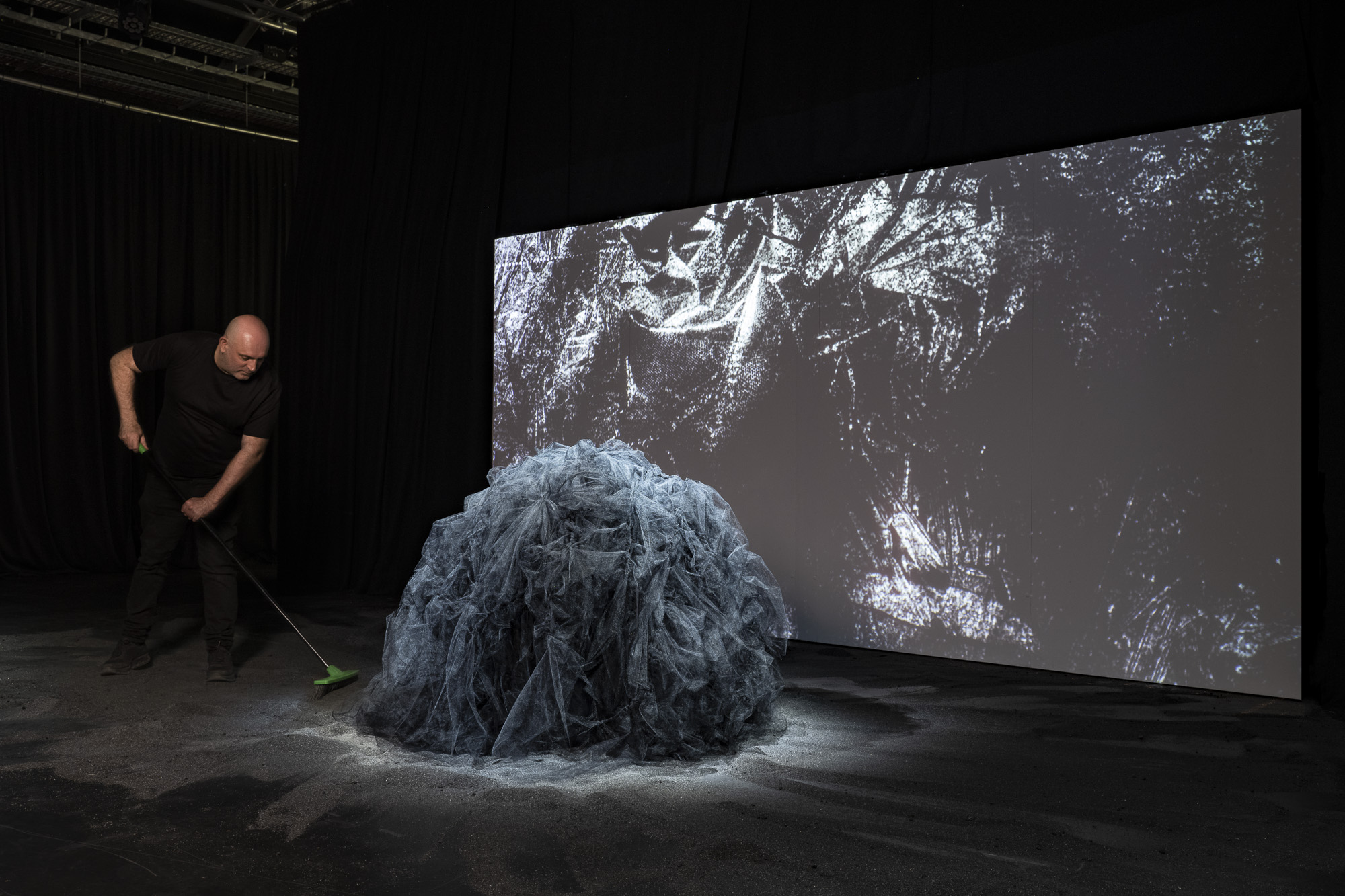
Beyond the clinical white walls of Paine’s exhibit is the darkness of the Masters students showing their work in the Martin Myer Arena. The symbiosis of works dealing with raw and organic materials, compounded into shape and sharp forms, contrasts with the voyeurism of Paine’s work. Here a womb-like space for the works is shaped into a section of squares. “The Dissemblance of Breath” by Jonathon Harris is a muted palette of greys, and blacks aglow in the light of a projection onto raw materials, almost like that of a cinema screen. Surrounding a woven mesh of black tulle and wool, which is shaped into a form resembling a tumbleweed, the floor is adorned with blackened cooking salt. In the corner hidden in shadow sits a commercial broom and chair, the salt—haphazardly brushed—marks an incomplete moment, like the aftermath of a performance, the work is not yet complete.
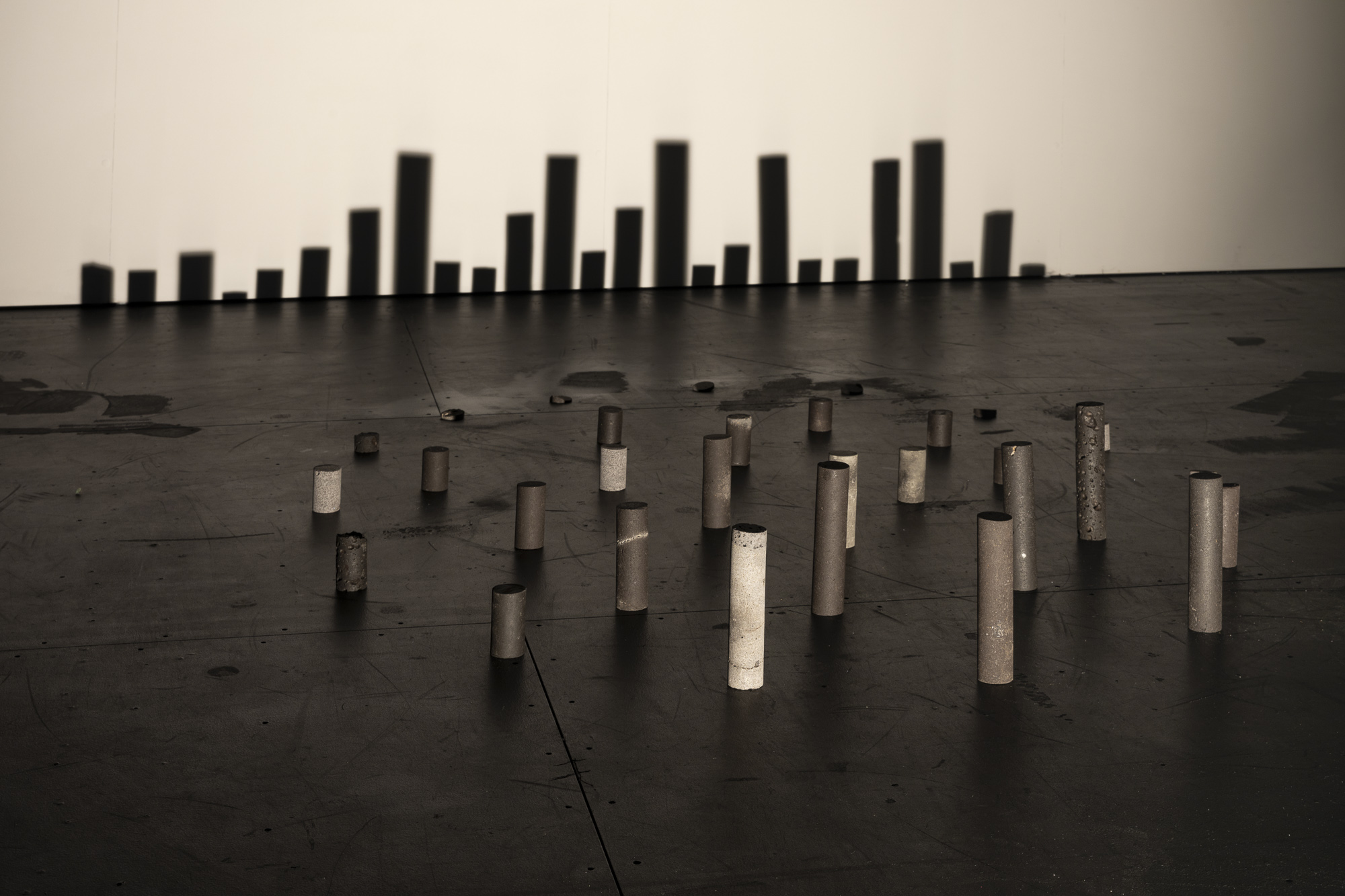
In the space beside Harris is “Observatory” an installation by Kia Zand, A heavy and golden structure is arranged in three parts. The first, a small obelisk sits in the centre of the space, towering over the other objects. Beaming through a sharp hole, light is directed toward a series of wooden cylinders casting a shadow of lonely skyscrapers. On the opposite side a solitary drum is surrounded by fabrics. The act of cutting the sharpened hole through the stone feels weighted and powerful. The hopeful nature of the light shining down on the drum suggests rhythm and a beat, while the glow on the cylinders presents a rising brightness in a congested space and the struggle of carving through an immovable object. The bluestone is sourced from Melbourne’s streets and suggests the significance of this material both before and after colonisation. Within all of these spaces lies an intense reverence for a moment I can only observe, and the presence of others only heightens the awareness of myself sitting with these works in their stillness and intense power. As I stand beside the drum with its heartfelt rhythm I am still in the space of Zand’s work, gazing down at woven words in solidarity with the Women of Iran in Zand’s work: “Women, Life, Freedom”.
Scott Mclatchie is currently studying a Masters of curatorship at the University of Melbourne, outside their studies, they are a painter concerned with the dystopian/utopia, which is further explored through their music practice in a variety of genres
